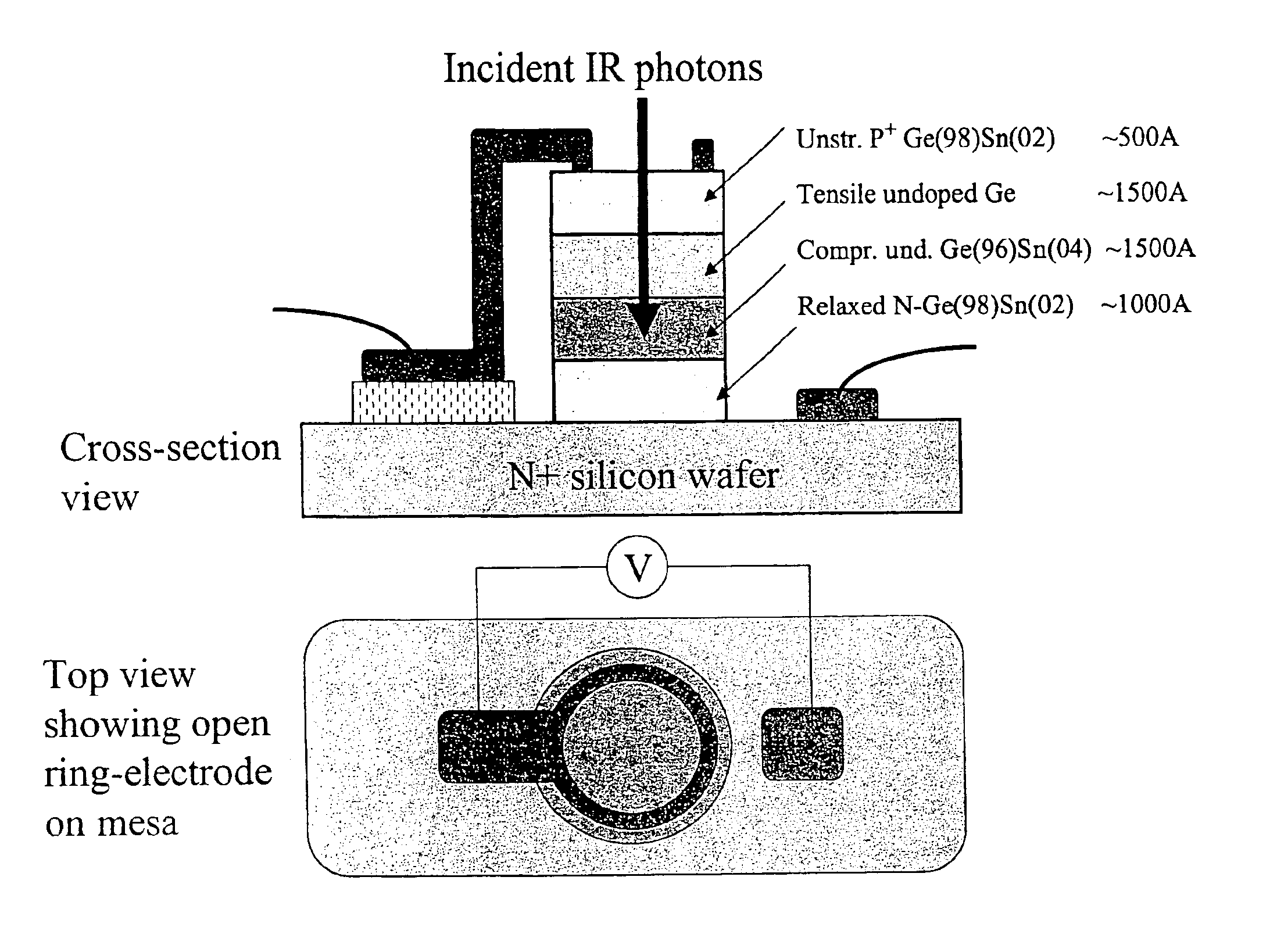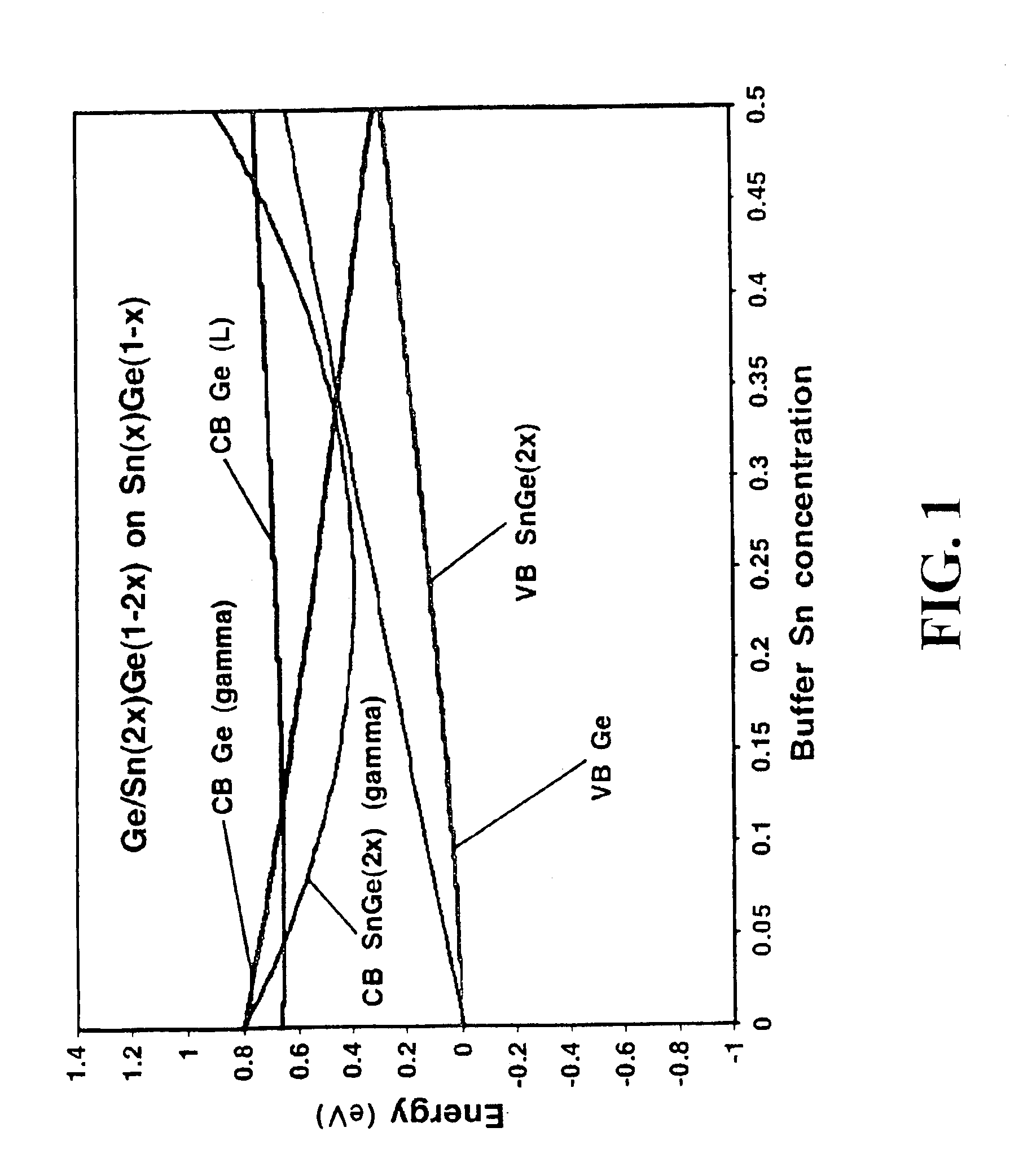Strain-engineered direct-gap Ge/SnxGe1-x heterodiode and multi-quantum-well photodetectors, laser, emitters and modulators grown on SnySizGe1-y-z-buffered silicon
a technology of snxge1-y-z-buffered silicon and heterodiode, which is applied in the direction of semiconductor devices, lasers, semiconductor devices, etc., can solve the problems of high cost, low quality, and hybrid integration approach
- Summary
- Abstract
- Description
- Claims
- Application Information
AI Technical Summary
Benefits of technology
Problems solved by technology
Method used
Image
Examples
Embodiment Construction
[0014]We describe interband embodiments first, then intersubband devices. We have identified three strained-layer direct-gap structures that are useful for band-to-band photodetection as well as lasing, emission, amplification, and modulation in the near-infrared and middle-infrared regions: (A) strain-compensated Type I MQW of tensile-strained Ge barriers, compressively-strained Ge1-2xSn2x quantum wells, grown upon a relaxed buffer of Ge1-xSnx upon silicon, wherein electrons and holes are confined in Ge1-2xSn2x; (B) an unsymmetrically strained Type-II system of tensile Ge and unstrained Ge1-xSnx grown on relaxed Ge1-xSnx upon silicon, with holes confined in Ge and electrons in Ge1-xSnx; (C) an unsymmetrically strained Type-I system with tensile Ge wells, compressive Ge1-xSnx barriers, grown upon relaxed SiySnxGe1-x-y upon silicon, with electrons and holes in Ge. FIGS. 1, 2, and 3 show the results of our first-principles band-offset calculations. Plotted in the figures are the highe...
PUM
 Login to View More
Login to View More Abstract
Description
Claims
Application Information
 Login to View More
Login to View More - R&D
- Intellectual Property
- Life Sciences
- Materials
- Tech Scout
- Unparalleled Data Quality
- Higher Quality Content
- 60% Fewer Hallucinations
Browse by: Latest US Patents, China's latest patents, Technical Efficacy Thesaurus, Application Domain, Technology Topic, Popular Technical Reports.
© 2025 PatSnap. All rights reserved.Legal|Privacy policy|Modern Slavery Act Transparency Statement|Sitemap|About US| Contact US: help@patsnap.com



